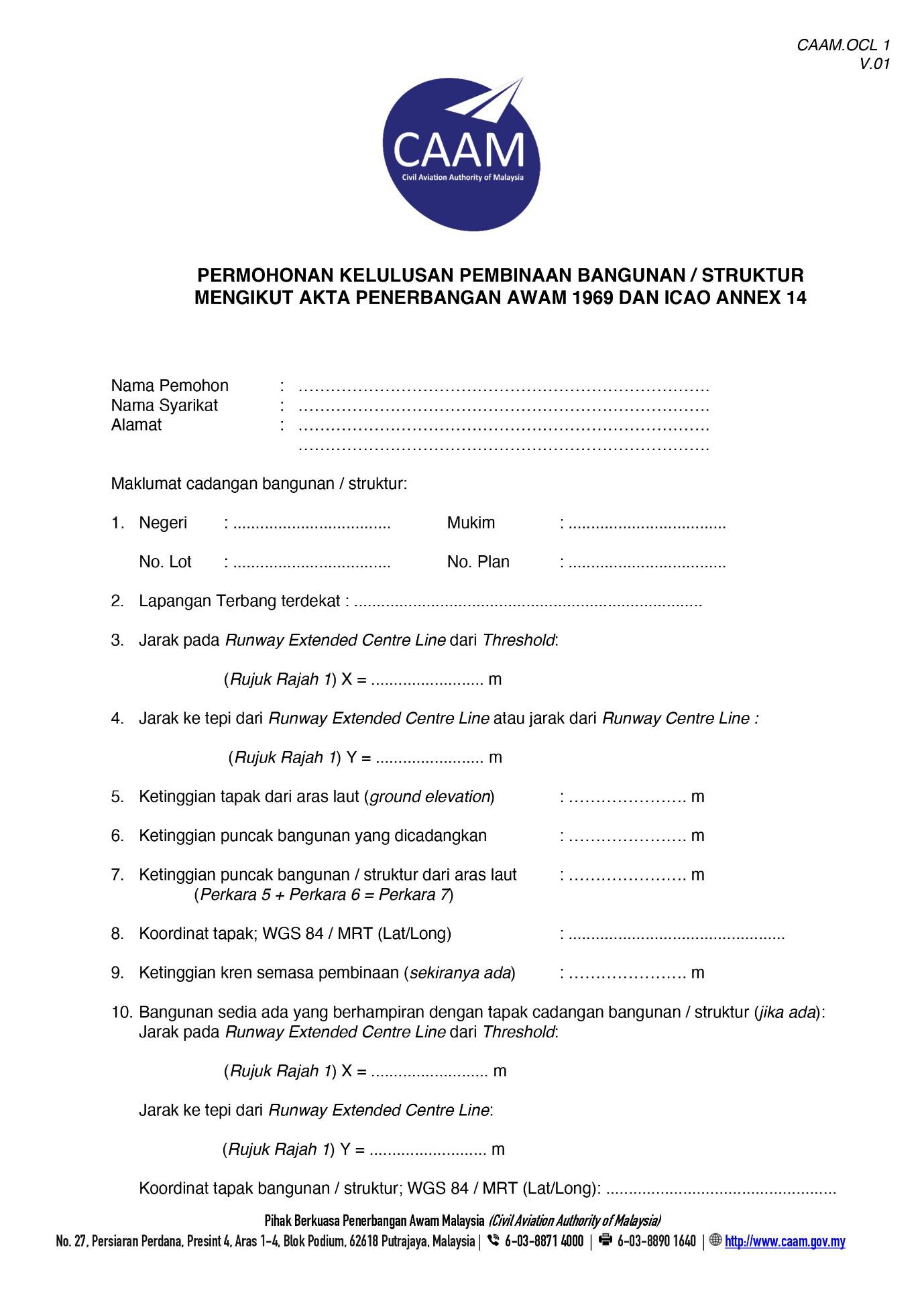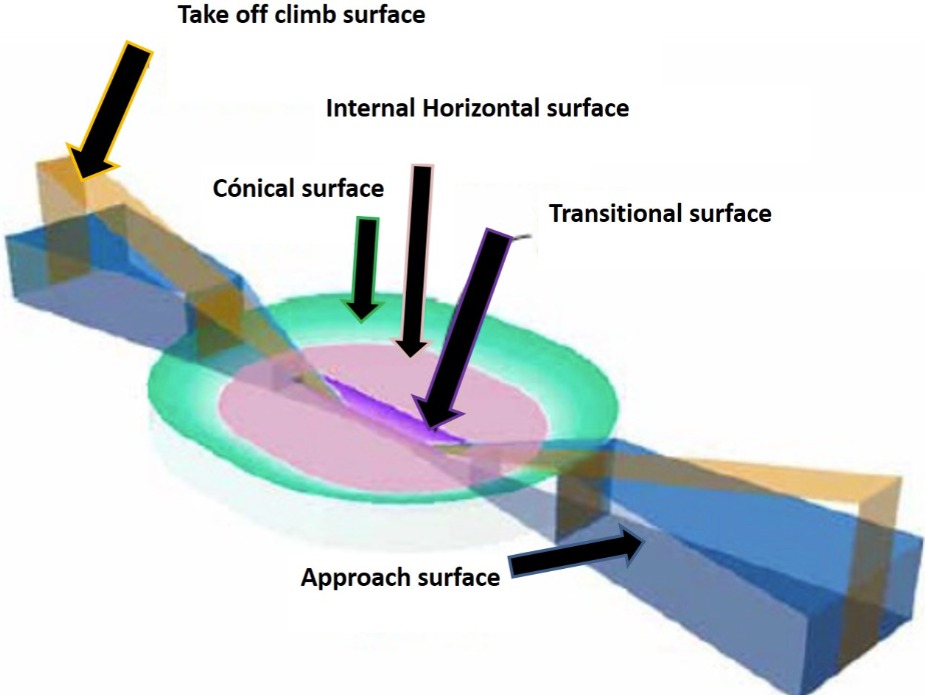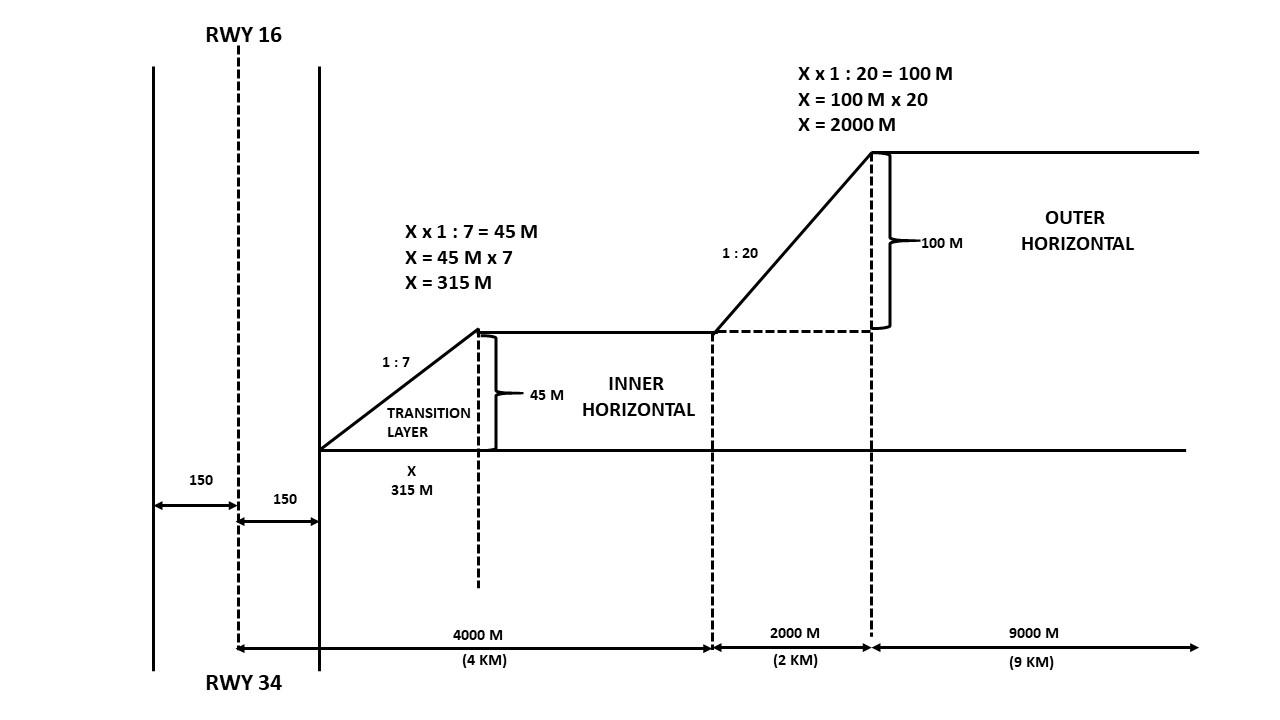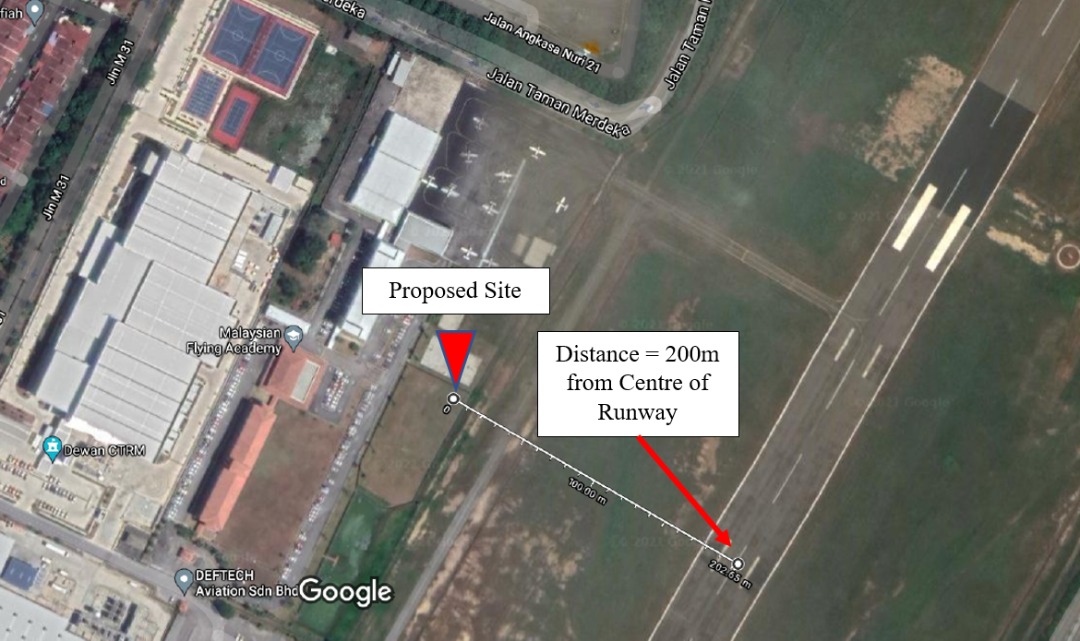Author: Ir. Dr. Justin LAI Woon Fatt | 29 July, 2021
INTRODUCTION
The requirements for airport design are based on criteria that have been set to ensure a safe environment. In order to ensure the safety of aeroplanes operating in airports and aerodromes, a set of limits for buildings, installations, plantations, and other elements in the surrounding region must be imposed. To maintain the safety of planned operations in aerodromes and airports, the International Civil Aviation Organization (ICAO) defines a series of 3D obstacle limitation surfaces (OLS). In general, these restrictions prohibit any additional barriers from encroaching on the region surrounding aerodromes and the accompanying aeronautical radioelectric facilities. This region consists of a series of easements that adhere to the so-called aircraft easement, which is formed for legal purposes through a legal document.
Figure 1 : 3D Obstacle Limitation Surfaces (OLS)
Obstacle limitation surfaces are defined as the volume of airspace that should ideally be kept free of obstructions to reduce the threats that obstacles provide to an aircraft. The essential surfaces of the obstacle limitation surfaces that shall be set for any runway are [1]:
- Approach Surface
- Transitional Surface
- Inner Horizontal Surface
- Conical Surface
The obstacle limitation surfaces set for runway meant for take-off is called Take-off Climb Surface.
WHY HEIGHT LIMIT NEEDED?
The laws that limit the maximum height of constructions are known as height limitation laws. For a number of reasons, these measures are taken. Some regulations limit the height of new structures so that views of an earlier work designated as a significant landmark by the government are not obstructed.
Natural and man-made structures both inside and outside an aerodrome’s border can have a significant impact on its effective use. As a result, certain sectors of the nearby airspace will be considered important to the aerodrome environment. To ensure that aviation navigation could be conducted safely, the Civil Aviation Act 1969 included rules for the regulation and marking of impediments on and near aerodromes. The utilization of Act arrangements as rules, guidelines, and works on relating to the impediment of hindrances and the sign of their quality, to which the aerodrome administrator, nearby power, designer, or land owner will be educated and needed to consent, is laid out in this Airport Standards Directive (ASD).
This Directive specifies the areas at and around aerodromes that must be kept clear of obstacles in order for the intended aircraft operations to be carried out safely and to prevent the aerodromes from becoming unusable due to the growth of obstructions. This Directive guarantees that the presence of impediments is correctly indicated in order to reduce aviation dangers.
WHAT ARE THE OBJECTS REGARDED AS OBSTACLES IN AERODROME?
According to Civil Aviation Authority of Malaysia (CAAM), below are listed the objects considered as obstacles in aerodrome [2]:
- Fixed objects, whether temporary or permanent, or parts thereof, that are located on an area intended for the surface movement of aircraft are obstacles.
- Mobile objects, whether temporary or permanent, or parts thereof, that are located on an area intended for the surface movement of aircraft are obstacles.
- Fixed objects, whether temporary or permanent, that are extended above defined surfaces intended to protect aircraft in flight are obstacles.
- Fixed or mobile objects that penetrate the obstacle limitation surfaces are obstacles.
In Malaysia, any items that broaden or may reach out over the predefined stature cut-off points of the controlled region or any piece of such region ought to be cleared or stayed far from any articles that expand or may stretch out over the predetermined tallness cut-off points of the controlled region or any piece of such region, as pronounced by request nearby an aerodrome or a guide to air route.
Any development at an airport that may breach the obstacle limiting surfaces, such as the construction, establishment, or erection of objects that could be considered impediments, must be addressed to the Department of Civil Aviation for approval. The evaluation would look into the impact of the proposed construction on air traffic control and operational operations. When reviewing proposed building, future development at the airfield and the resulting need for stricter obstacle limitation surfaces must be considered.
The local authority, the developer, or the property owner is responsible for notifying the public of any proposed construction, or part thereof, that may create or create impediments. Construction, establishment, or erection of things that may pose a hazard must be reported to the CAAM via CAAM.OCL 1 for clearance. The airfield operator is responsible for alerting any construction that will be located on the aerodrome. To ensure the continued safety of air navigation, CAAM may approve the proposed development on specified terms and conditions.
HOW TO CALCULATE?
CAAM’s guidelines state that the height of a building was dependent upon the location and its runway threshold level.
Example:
- Distance from Proposed Site to Centre Line of Runway = 200m
- The Proposed Site sits in the Transition Layer.
- Maximum building for proposed site = (200 – 150)m/ 7 = 7.14 meter from the threshold level
CIVIL AVIATION AUTHORITY OF MALAYSIA (CAAM)
The Civil Aviation Authority of Malaysia (CAAM), formerly known as the Department of Civil Aviation (DCA) is an administration body that was set up in 1969 under the Ministry of Transport Malaysia. DCA was incorporated into a legal substance called as CAAM on February 19, 2018. The foundation of CAAM is as per the International Civil Aviation Organization’s (ICAO) order that contracting governments to the Chicago Convention set up an independent common flying body to guarantee viable administration of common aeronautics wellbeing and security. CAAM is making impressive advances under this new umbrella to reinforce the country’s flying norms while likewise handling current challenges, to foster Malaysia in the aeronautics area with regards to the nation’s plan to be the main place for the business both locally and around the world. CAAM is responsible for the regulation of civil aviation technical concerns. CAAM’s primary responsibility is to contribute to the growth of Malaysia’s civil aviation technical sector, and it is required to adhere to ICAO standards in order to ensure that aviation remains safe, secure, and efficient.
SUBMISSION INFO
According to The Civil Aviation Act 1969 And ICAO Annex 14, for any construction that is within the radar of take-off climb and approach surface of an airport, Principal Submitting Person (PSP) is required to apply for approval by the CAAM known as “Application for Building/ Structure Construction Approval”. The checklist of CAAM’s requirements is stated as below in Figure 5 that are required to be fill in and submit accordingly to CAAM for their approval. Figure 4 is a reference to be used in order to fill in the checklist.
 Figure 4: Distance Measurement of X and Y
Figure 4: Distance Measurement of X and Y
 Figure 5: CAAM Checklist – CAAM.OCL 1
Figure 5: CAAM Checklist – CAAM.OCL 1
The checklist is available to be downloaded via https://www.caam.gov.my/wp-content/uploads/2021/02/6.-CAAM.OCL-1-3.pdf
The coordinate’s reference could be obtained in Google Maps if the exact information is not available by the client. Besides the CAAM checklist, the PSP shall provide the key plan, location plan, building plan, survey plan, and plan that indicate the value of X and Y in A3 sizes as a formality and a better understanding for CAAM. If the development has an existing approval from CAAM, it is best to attach it. Some authorities may accept existing approval but for some authorities, they would require renewal of the approval if it’s too old.
CONCLUSION
For any development that is nearby airport, it always to ensure that approval for height limitation is obtain by CAAM. This is to ensure that the building to be erected not being categorized as obstacles by the aerodrome standards.
Ir. Dr. Justin LAI Woon Fatt
CEO/ Founder
IPM Group
References:
[1] Airport Standards Directive 401 [ASD 401] Control and Denoting Obstacles. Department of Civil Aviation Malaysia 2005
[2] Airport Standards Directive 402 [ASD 402] Control of Obstacles at Aerodromes. Department of Civil Aviation Malaysia 2007
[3] https://www.caam.gov.my/wp-content/uploads/2021/02/6.-CAAM.OCL-1-3.pdf




